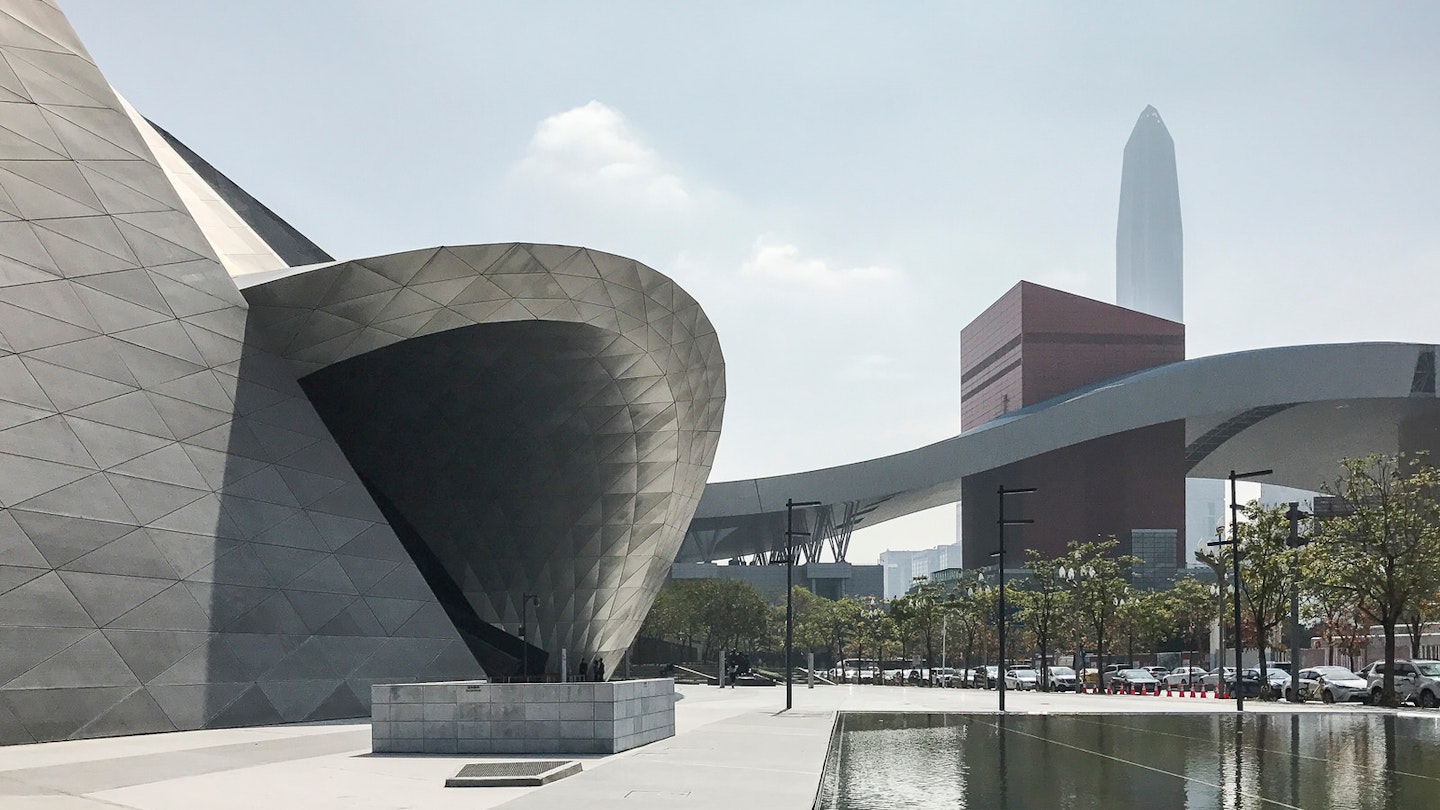Just three decades ago, Shenzhen was a drowsy fishing village on the fringe of Hong Kong, across the water in mainland China. Today, it’s one of the country’s economic powerhouse cities, at the mouth of the rapidly developing Pearl River Delta region, with over 12 million people calling the city home.
China’s richest city, Shenzhen made its name as the world’s factory floor when it was set up as an economic free zone at the end of the 1980s. In the past decade, the city has transitioned into a tech hub, home to some of China’s most innovative firms.

Shenzhen is also an increasingly creative urban center. In 2008, it was designated a UNESCO Creative City to bolster its reputation in the arts, cementing its pivot from industrial engine to creative capital.
Shenzhen makes an easy day trip from Hong Kong, as well as an interesting city destination within mainland China in its own right. We’ve rounded up Shenzhen’s best design spots, from cultural hubs to local boutiques.
Design Society
In December 2017, Shenzhen’s burgeoning design credentials were crowned by Design Society, a chic white and glass building in the gentrifying port of Shekou. Designed by Pritzker Prize-winning Japanese architect Fumihiko Maki, this design hub – opened in collaboration with London’s Victoria & Albert Museum and China Merchants Group – has galleries, artist studios and a vast public outdoor area. Within its cantilevered glass space, there’s also a gift shop and a café.

Design Society isn’t so much a gallery as a creative lightning rod for design in China. ‘Design Society will connect the creative industries of China to the world,’ says Ole Bouman, the society’s director – a clear statement of intent that aligns with Shenzhen’s aspirations to be an art city.
Regardless of its mission, Design Society’s groomed harbourfront park is one of the city’s most pleasant places to relax and take in the views of fast-developing Shenzhen, just across the harbour from Hong Kong.
OCT Loft
Many cities around the world are recognizing the power of transforming heritage industrial buildings into art ‘villages’. Palm tree-studded OCT Loft in the district of Nanshan is Shenzhen’s version: it has wide avenues, a laidback feel and a cluster of air-conditioned galleries that make it the ideal place to immerse yourself in China’s grassroots art scene.

OCT Loft is a sprawling complex of vibrant factory buildings, some adorned with eye-catching art, that house everything from expansive art galleries to unique design shops (try IM Loft Shop and the quirky Incover). This former industrial area also hosts a variety of lively restaurants filled with the city’s weekenders, such as Malaysian Champor Champor and artsy My Coffee, alongside a selection of patisseries. When the sun sets, head to a bar like the Penny Black Jazz Bar, which features live music most evenings.
The neighbourhood is anchored by the OCT Art Terminal, the first gallery to establish itself here in 2005. Within its expansive warehouse space, remarkable pieces from both Chinese and international artists can be found. Smaller galleries are tucked away down the alleyways that stem from the main street, Enping Jie.

On the first and third weekend of every month, the T-Street Creative Market takes place down the spine of OCT Loft, with local artisans selling an array of products from quirky smartphone cases and personalized jewelry to Chinese calligraphy and vintage clothing.
Additionally, a short taxi ride from OCT Loft is the OCT Creative Exhibition Center, an exhibition centre designed to resemble a spaceship, which has welcomed landmark exhibitions from groups including the highly acclaimed visual artists TeamLab in 2017.
In Shenzhen’s cloud-brushing Futian business district lies the massive Museum of Urban Art and Contemporary Planning (MOCAPE), designed by high-profile Austrian architect Coop Himmelblau. This landmark museum, situated next to the Children’s Palace, is an integral part of Shenzhen’s plan for the city’s new Futian Cultural District.

Opened in 2017, this public art space is as impressively monumental from the outside as it is on the inside: a chrome curve that seamlessly blends two institutions, the Planning Exhibition and the Museum of Contemporary Art.
Inside, a reflective cloud bubble greets visitors in the curved entrance hall (make sure to grab a selfie in it – surprisingly challenging given the varying angles). The exhibits, currently focused on sculpture in China, are wide-ranging and interactive, though they might feel a bit sparse.
Muji Hotel
Japan’s most recognizable design brand, Muji, selected Shenzhen as the location of its first hotel at the end of 2017. For design enthusiasts looking to stay overnight in China, it’s the ideal option.

Located in the stylish shopping centre of UpperHills in the Futian district, the Muji Hotel is an elegant timber-fronted low-rise establishment featuring 79 rooms and a vast Muji shop underneath – China’s largest. There’s also a Muji diner on the ground floor serving Japanese classics. The only downside? It’s crowded with Shenzhen’s influencers posing next to the Muji sign.
Make it Happen
Shenzhen is just an hour’s subway ride from central Hong Kong, making it an easy day trip (it’s also a quick train ride from Guangzhou). Since Shenzhen is situated in mainland China, visitors will need a visa to enter the country. Day visas for Shenzhen can be obtained at the Luohu border, depending on your nationality.





